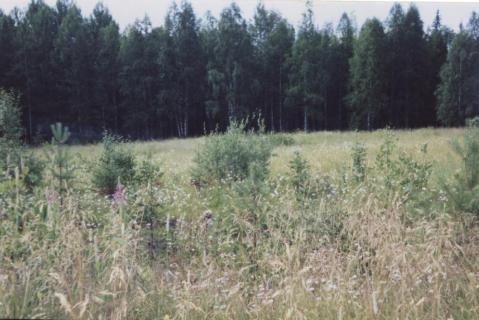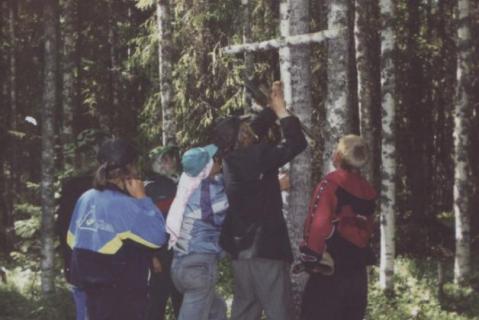In 1940-1942 Poles deported from the western regions of Ukraine, about 300 families of “settlers” and “refugees” were relocated to the Vetka special settlement. Documents of the Komi NKVD for April 1940 and July 1941 record high mortality rates among the deportees, especially the children. Local inhabitants recall that there were about 200 crosses marking the graves in the cemetery. The total number buried there has not been established. The names of 102 people who died in Vetka are known. In August 1941 the special settlement regime was lifted. During 1942 the Poles left, and the graveyard was abandoned.
In the 1970s the grave markers were used as firewood by seasonal workers. In 2002 the graveyard was studied by an expedition of the Memorial club at the children’s centre in the town of Yemva, director P.I. Litus. The members of the expedition erected a memorial cross in the graveyard.
(NOTE: the town of Zheleznodorozhny (lit. Railroad), renamed Yemva in 1985, was formerly at the heart of the Sevzheldorlag camp system. Until 1941 it was known as Knyazhpogost.)
The Memorial online database (2025) lists 129,473 victims in the Komi Republic. (See Nizhny Chov.)
Among them were over 64,000 deportees sent to or born in the Republic. During collectivisation (1929-35) they numbered 20,366, a quarter of whom were aged 1-10. In 1940 there was a massive influx from occupied Polish territory (19,367). More, mainly Germans (5,970) were sent in the 1940s and 1950s (6,699).
| State of burials | Area | Boundaries |
|---|---|---|
|
not preserved
|
not determined
|
not delineated
|
[ Original texts & hyperlinks ]
“Vetka special settlement. Deported Poles graveyard”, Virtual Museum of the Gulag [retrieved, 26 May 2022; no longer accessible]


